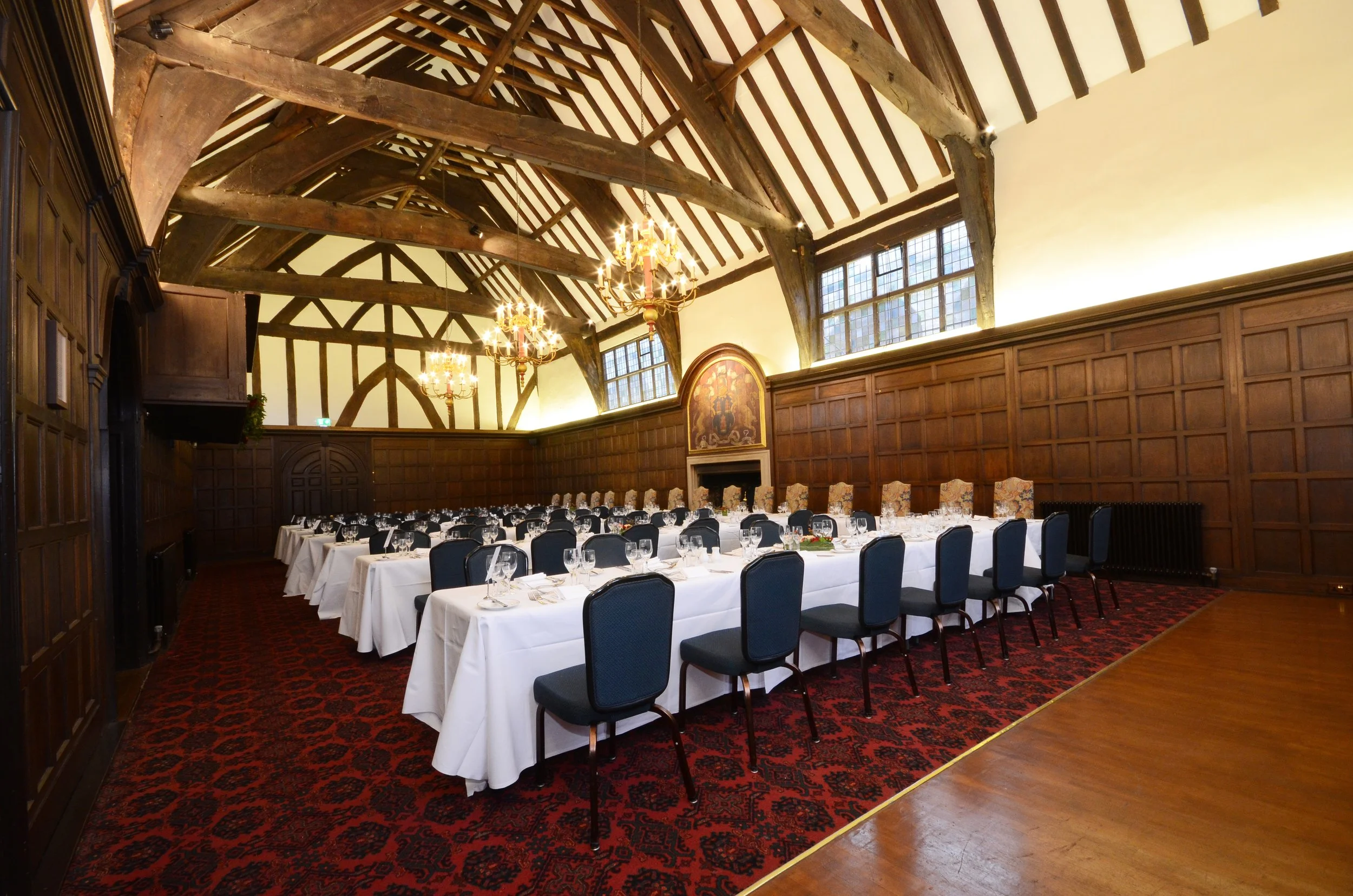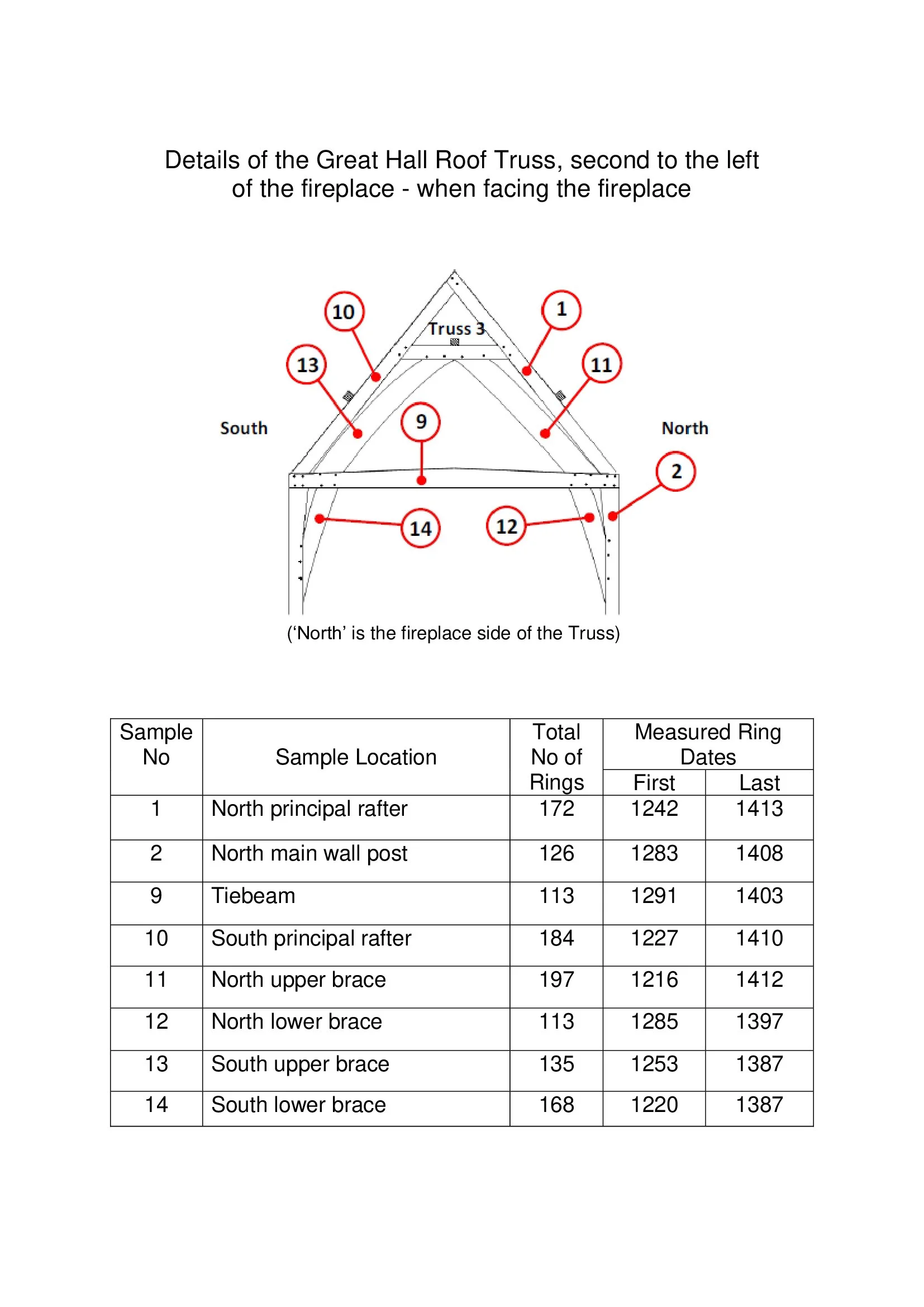The Wilford Archive
The Hall Roof Timbers
In 2012 the Merchant Taylors arranged for samples of the Hall’s roof timbers to be taken in order to determine their age. This is termed a ‘dendrochronological investigation’. It involves taking small diameter ‘cores’ from each of the separate roof timbers and then comparing the sequence of annual growth rings in the cores, with a reference set comprising the sequence of growth rings from trees of known ages.
A total of 40 cores were taken, one from each of the 24 roof timbers in the Great Hall and one from each of the 16 roof timbers in the Small Hall (these latter timbers are not visible due to the presence of the ceiling). All the timbers are oak.
Each core was prepared by sanding, polishing, and measuring the widths of their annual growth rings to an accuracy of 1/100th of a millimetre.
The sequence of growth ring widths in each core was then compared with each other, and a single group of cross-matching samples was formed. This showed that the trees from which these timbers were cut were growing during a 209-year period from 1216 to 1424.
(See below for the results of core samples taken from one of the trusses)
By identifying the core with the ‘earliest last complete sapwood ring’, it was possible to say that the felling date of that tree was 1410 and by judging the amount of sapwood and the relative position of the heartwood/sapwood boundary in the other cores, that the felling of all of the trees took place during two separate periods:-
· the Great Hall roof timbers were felled 1410-1413, and
· the Blue Hall roof timbers were felled 1425-1434.
The detailed analysis also showed that the two sets of timbers were likely derived from two distinct though not widely separated woodlands, all in the general vicinity of York, and that the majority of the trees had been growing for approaching 200 years.
Dendrochronological dating is possible because trees grow by adding one, and only one, growth ring every year, each new annual growth ring is added to the outside of the previous year’s growth and the width of the annual growth ring is determined to a large extent by the weather conditions during the growth period (March to September). Because the weather over a number of consecutive years is unique, so too is the growth-ring pattern of the tree. By comparing cores having a minimum of 54 growth rings, reliable dating is achieved.
GAW December 2012



